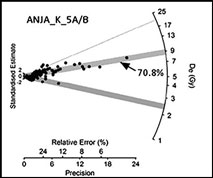Article contents
Was there mid Holocene habitation in Madagascar? A reconsideration of the OSL dates from Lakaton'i Anja
Published online by Cambridge University Press: 10 April 2019
Abstract

Optically stimulated luminescence (OSL) dating of deposits at the Lakaton'i Anja rockshelter site in Madagascar extends the chronology of human activity on the island back to 4500 BP. These results have roused archaeological and palaeoecological interest in the implications of mid Holocene human colonisation of remote islands in the Indian Ocean. There is, however, evidence of extensive bioturbation at the site, reflected in over-dispersion and other characteristics of the OSL data. It is argued here that OSL ages on minor sedimentary components indicate a much younger chronology consistent with radiocarbon dates for human activity no earlier than the first millennium AD.
- Type
- Debate
- Information
- Copyright
- Copyright © Antiquity Publications Ltd, 2019
References
- 5
- Cited by


